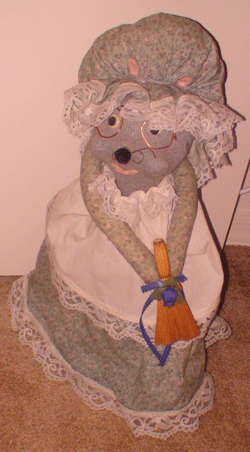 Jaimmie writes: One of my favorite stories to tell at rest time is the story of Peter Rabbit. I like to tell this classic tale of mother knows best when the children are in a particularly squirrelly or defiant mood. Many children can relate to the bold, independent and adventurous little Peter – especially in early spring as the world is blooming and bursting and begging to be explored. The children are tucked in and I sit in my rocker in the hushed room with a baby or a lyre on my lap. I begin to sing, as I do every day, the song that introduces our tale, “Peter, listen to your mother. You may go down the lane. Or to the meadow to play. Stay out of the garden.” The children know the song well and they know the story that will follow. They have heard it day after day, for weeks at a time. They snuggle up in their beds, listen to the familiar tale and drift off to sleep.
Jaimmie writes: One of my favorite stories to tell at rest time is the story of Peter Rabbit. I like to tell this classic tale of mother knows best when the children are in a particularly squirrelly or defiant mood. Many children can relate to the bold, independent and adventurous little Peter – especially in early spring as the world is blooming and bursting and begging to be explored. The children are tucked in and I sit in my rocker in the hushed room with a baby or a lyre on my lap. I begin to sing, as I do every day, the song that introduces our tale, “Peter, listen to your mother. You may go down the lane. Or to the meadow to play. Stay out of the garden.” The children know the song well and they know the story that will follow. They have heard it day after day, for weeks at a time. They snuggle up in their beds, listen to the familiar tale and drift off to sleep.
Lately, I’ve been telling the story of Chez Jacques and Amelie. This story was inspired by a sweet, old pentatonic melody and a lot of full plates at the end of the meal. “Hearty eaters” and “choosy eaters” alike love the story of the talented chef and his hungry brood. Every evening, Jacques fixes a fine meal for his family while his children sit at the table, chanting and singing “We will empty any pot. Little children eat a lot. Bigger folks will have to fast. I do not think the bread will last…” (Julius Knierim).
A pedagogical story paints a picture as the images come to life in the storyteller’s mind. The children relate to the characters and the tale is vivid and wholesome and affirming. Lectures, scoldings, commands and demands are all often ill-received (if received at all) and soon forgotten. It is clear to me that the pedagogical tale leaves a deep impression upon the child. The unintended benefit is the healing effect it also has on the “Pedagogue” (that’s us). The “choosy eaters” probably won’t suddenly start eating everything once they’ve heard the story of Chez Jacques, but telling the story is a nurturing way to address the matter without frustration.
At LifeWays, we also use simple story-songs and verses to mark a transition. For example, when it is time to clean up and prepare for our meal, I’ve learned it’s best not to suddenly announce, “It’s clean-up time,” or start nagging and begging, “Please, help clean!” or sing some condescending, Barney-esque jingle about cleaning and working. I like to simply sing this verse while I begin tidying:
Grandmother mouse
Likes a tidy house
With the toys all put away
At the end of play.
Her little broom sweeps
While dolly sleeps.
The teacups and dishes
Line up like wishes.
Let’s rest for a while,
Mousey nods with a smile.
The house is neat.
Let’s go have a treat.
-Suzanne Down
When it is time to come in from the clearing or go up the stairs, I always sing, “Up, up, up the mountain. Up the mountain side. Climb, climb, climb the mountain. We all climb so high.” We all hike up “The Mountain” together, singing and huffing and puffing our way to the top where a hot, tasty meal awaits. And, as always, we sing:
Earth who gives to us this food.
Sun who makes it ripe and good.
Sun above and Earth below,
To you our loving thanks we show.
For more on the subject, I recommend this wonderful collection of pedagogical tales – Healing Stories for Challenging Behaviour by Susan Perrow.
Jaimmie Stugard has been a caregiver at LifeWays Milwaukkee for many years and has recently become Director of the Center.
